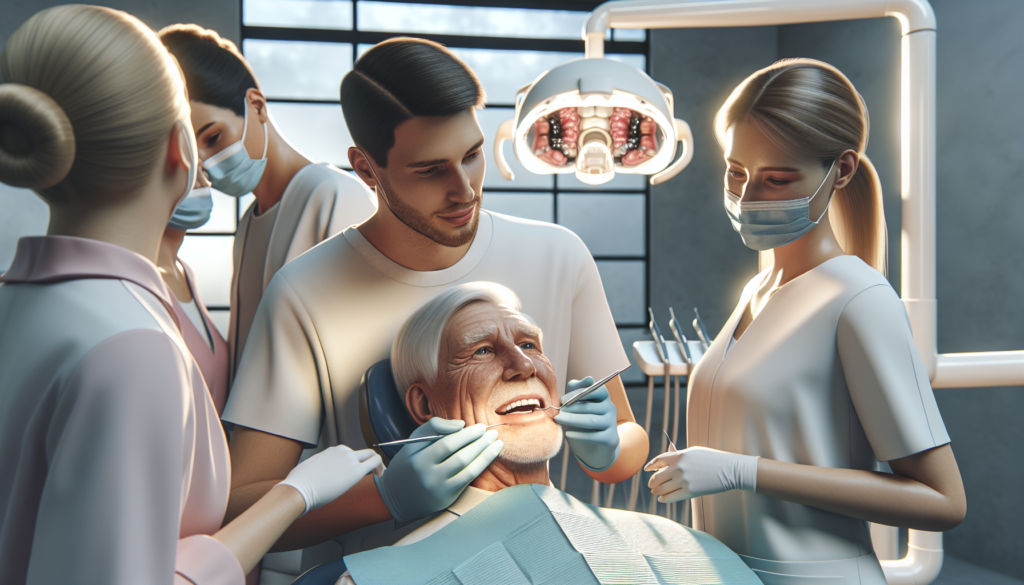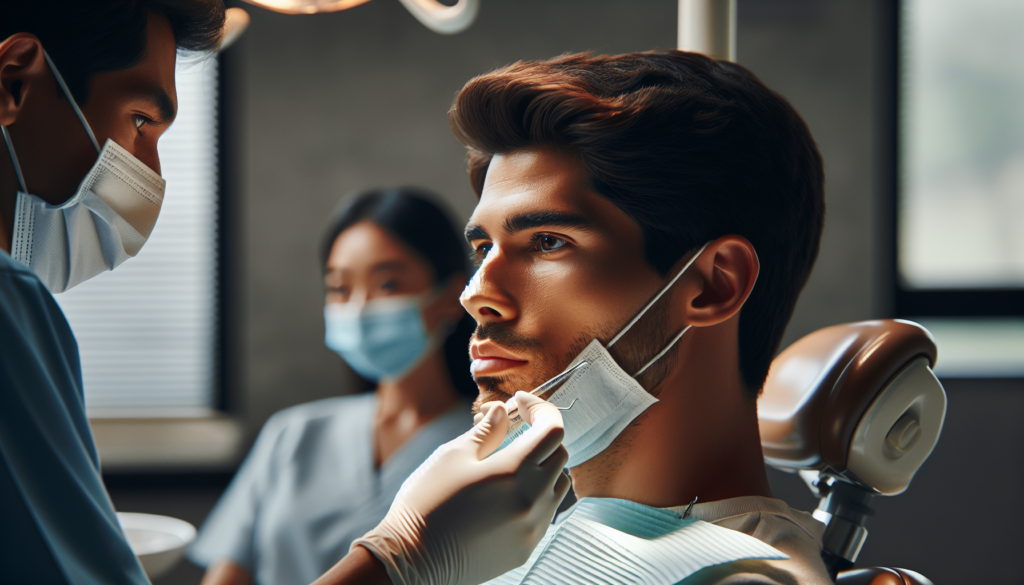Updated Medical Emergencies Poster: Enhancing Dental Practice Preparedness and Patient Safety
Just like small daily habits can transform your life, consistent dental habits can create a lifetime of confident, healthy smiles. Learn more in The Habit Method.
When a medical emergency occurs in a dental practice, every second counts. From syncope and allergic reactions to cardiac arrest and asthma attacks, prompt and effective management can mean the difference between a positive outcome and a life-threatening situation. Ensuring that every team member feels confident and capable during such events is not just a professional responsibility—it’s an ethical imperative rooted in patient safety.
The updated Medical Emergencies Poster, as presented in recent literature (British Dental Journal, 2020), provides dental professionals with an evidence-based, user-friendly reference tool designed to enhance emergency readiness. This updated poster helps teams respond systematically and efficiently to critical incidents, fostering a safer, more compliant dental environment.
Why Medical Emergency Preparedness Matters in Dentistry
According to research published in multiple dental safety reports, medical emergencies in dental settings are not rare. Episodes such as vasovagal syncope, hypoglycemia, angina, or anaphylaxis can occur in otherwise routine appointments. Being prepared—with proper training, equipment, and visual aids like the Medical Emergencies Poster—is essential.
The General Dental Council (GDC) and Resuscitation Council (UK) recommend that every dental practice maintain staff readiness and conduct regular medical emergency training.— Resuscitation Council (UK), 2021
Preparedness offers several key benefits:
- Enhanced patient safety: Patients trust dental teams to manage emergencies promptly and effectively.
- Reduced anxiety for staff: Confidence grows when every member understands their role during an emergency.
- Regulatory compliance: Aligns with standards required by national health authorities and inspection bodies.
Overview of the Updated Medical Emergencies Poster
The new Medical Emergencies Poster represents a modernized, evidence-based resource for all dental care settings. Developed to reflect the latest clinical safety guidelines, it has undergone major design and content updates to make it more intuitive and educational for staff at all experience levels.
- Refreshed Design: Clear visuals and colour-coded sections make navigation easier during high-pressure moments.
- Evidence-Based Protocols: Updated content aligns with current best-practice recommendations and aims to standardize emergency responses across dental teams.
- Accessibility: Available in a format designed for quick reference—perfect for areas such as treatment rooms, staff areas, or reception zones.
Each emergency scenario—from angina to hypoglycemia—is presented with step-by-step guidance. The concise structure supports rapid decision-making, especially crucial when time is limited. Such design innovation mirrors broader efforts in healthcare to make life-saving information easily accessible on the front line.— British Dental Journal, 2020
Key Benefits for Dental Practices
Updating your clinic’s Medical Emergencies Poster is a small step that yields substantial impact. Here’s how:
- Supports Clinical Confidence: Step-by-step instructions minimize hesitation and support rapid, coordinated action.
- Improves Training Efficiency: The poster serves as a focal point for emergency drills and in-house simulations.
- Promotes Compliance: Helps meet professional and regulatory requirements for emergency preparedness.
- Strengthens Trust: Patients value safety and transparency—visible preparedness reassures them they’re in safe hands.
Team resilience in emergencies is built through routine practice, shared knowledge, and reliable resources. The updated poster empowers leaders to create a learning culture where safety is always prioritized over routine.
How to Implement the Updated Poster in Your Dental Practice
Integrating the updated Medical Emergencies Poster doesn’t require complex planning, but it does call for intentional strategy. Consider these best practices for maximum impact:
- Display Strategically: Post copies in every clinical and staff area, ensuring visibility during all operative hours.
- Incorporate in Training: Use the poster during monthly or quarterly emergency response drills. Reinforcing procedures visually supports long-term memory retention.
- Encourage Familiarity: Discuss emergency protocols during morning briefings to ensure that all staff remain confident and aligned.
- Update Regularly: Verify that your poster version reflects the most recent guidance. Replace old materials when updates are issued.
Practices that integrate visual aids like these often report improved team cohesion and faster reaction times during real emergencies. The goal is not fear but calm preparedness—a mindset cultivated through awareness and teamwork.
Supporting Continued Education and Compliance
Preparedness is not a one-time project—it is a continuous journey of improvement and accountability. The Medical Emergencies Poster directly supports dental teams in meeting Continuing Professional Development (CPD) requirements related to patient safety and resuscitation training.
- CPD Integration: Incorporate the poster into annual CPD sessions to reinforce current protocols.
- Auditable Compliance: Displaying and referencing the poster during inspections evidences adherence to safety standards.
- Periodic Review: Review emergency procedures at least once a year or following any relevant update from professional council guidelines.
Equipping your team with structured, updated resources not only enhances compliance but also instills daily confidence. A culture of safety grows from consistent, intentional habits—just like maintaining good oral health routines.
Frequently Asked Questions (FAQ)
1. What is the updated Medical Emergencies Poster for dental practices?
It’s an evidence-based visual resource developed to help dental teams manage common medical emergencies efficiently. It presents step-by-step guidance for conditions such as syncope, cardiac arrest, asthma attacks, and anaphylaxis, ensuring clear decision-making during critical moments.
2. Why was the poster updated?
The poster was refreshed to reflect current clinical guidelines and international safety standards. The updated design emphasizes clarity, accessibility, and integration into daily dental operations.
3. How often should dental teams review emergency procedures?
Experts recommend reviewing and rehearsing protocols at least annually. However, many practices choose quarterly sessions to maintain confidence and fluency in emergency response performance.
4. Where should I display the updated Medical Emergencies Poster?
Place it in easily visible areas—such as treatment rooms, sterilization areas, or staff lounges—where it can be quickly referenced during an emergency.
5. How does this resource improve patient safety?
By providing visual, easy-to-follow instructions, the poster helps dental teams act swiftly and consistently. Rapid recognition and management directly reduce risks and improve outcomes for patients experiencing medical emergencies in dental settings.
Conclusion
Emergency preparedness is built not through fear, but through knowledge, consistency, and teamwork. The Updated Medical Emergencies Poster offers an invaluable tool that enhances confidence, safety, and regulatory compliance in every dental environment. When every team member knows their role, patient outcomes improve, and the entire dental experience becomes safer and more trustworthy.
As with personal wellness, professional safety readiness is built through habit—repeated small steps that lead to confidence in critical moments. Strengthen your daily approach to practice safety, teamwork, and patient confidence today. Explore The Habit Method for inspiration on how consistent habits lead to lasting results in both life and dentistry.
Post Disclaimer
DentalUp is for educational purposes only and cannot accept personal dental information such as x-rays, photos, or treatment details. See full disclaimer here.





